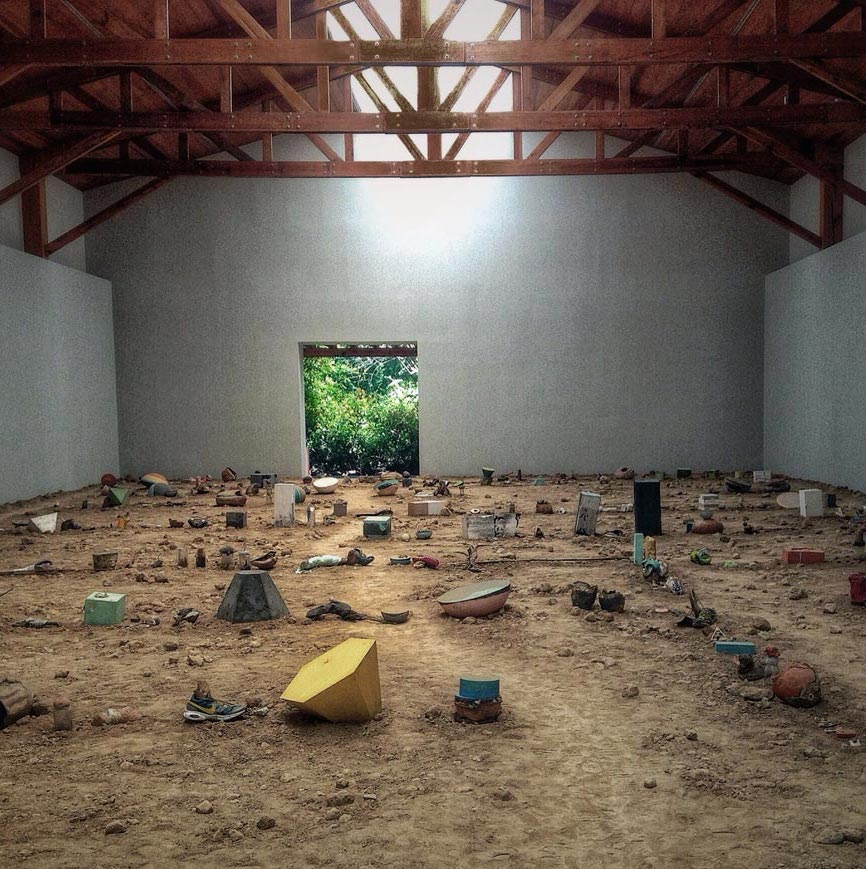Argentinian artist Adrián Villar Rojas (b. 1980) took a departure from his previous work in 2014. He is known for his use of clay and concrete in large sculptural installations. He loves ephemerality; his sculptures are designed to crack and fissure naturally. He committed a little more to the passing of each moment with his exhibition in Kurimanzutto in Mexico City. Los Teatros de Saturno makes the ephemerality a little more profound by stepping away from sculpture, which has connotations, whether that’s true of the particular work or not, that the piece is immortal.
The installation looks as though nature has retaken the gallery space. The floor is soil, littered with both natural and manmade objects. The staircase is short one step, clearly delineating a departure point from a manmade and synthetic world. The only light comes from the sun. Viewers are immersed in sights, sounds, natural smells and the patient work of nature as it takes a hold in the space.
The artist was interviewed by filmmaker Jordan Bahat. We’re presenting that video today along with select images from Rojas’ work.
Bill Rodgers is the Managing Editor of cfile.daily.
What do you think of Adrián Villar Rojas and his installation? Let us know in the comments.
Argentine sculptor and 2011 Venice Biennale exhibitor Adrián Villar Rojas produces monumental site-specific works, primarily in clay, according to his biography on Artsy. The artist first chose the material for its low price and availability, but since then it has come to influence his concept of form. With their crude physicality and cracked surfaces, his sculptures are redolent of ruins, but their forms are more futuristic than antiquated. A person loved me (2012), a towering structure of interconnected pipes created for the New Museum’s 2012 triennial, was a largely site-responsive work for which Villar Rojas and his team improvised new working methods, applying clay to pieces of polystyrene. My dead family (2009) portrayed a life-size whale, made primarily of clay, wood, and rocks, lying beached in a forest in Patagonia. His pieces are typically destroyed after being exhibited, becoming a sort of temporary performance. “I really love the idea of not having a body of work,” says Villar Rojas, who lists comic books and grunge music as influences.






Add your valued opinion to this post.